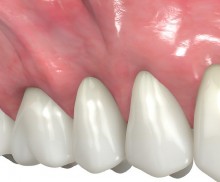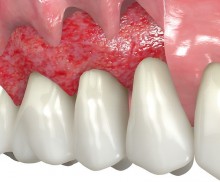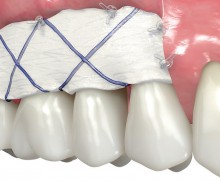Broadening of the attached gingiva
The loss of the attached gingiva affects the oral health as well as the aesthetics and in addition compromises the natural support of the teeth or the dentures [1,2]. Vestibuloplasty is a pre-prosthetic surgical technique that has been developed to rebuild a sufficient vestibular depth by reducing the high muscle tensions that are streching to the maxillary or mandibular sides [3,4]. Two frequently used techniques to reconstruct deficient mucosal tissue are the free gingival graft (FGG) and the subepithelial connective tissue graft (SCTG) [5]. The gold standard, however, is still the autologous FGG from the hard palate especially when reconstructing a new band of attached gingiva [3,6,7]. Due to several limitations e.g. the amount of existing autologous tissue, discomfort during tissue harvesting and color mismatch [6], alternatives such as the mucoderm® acellular porcine matrix were developed.













